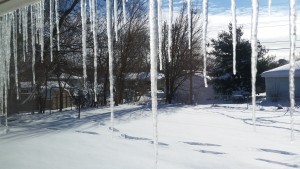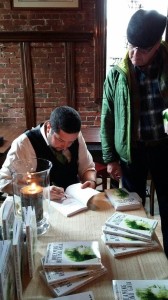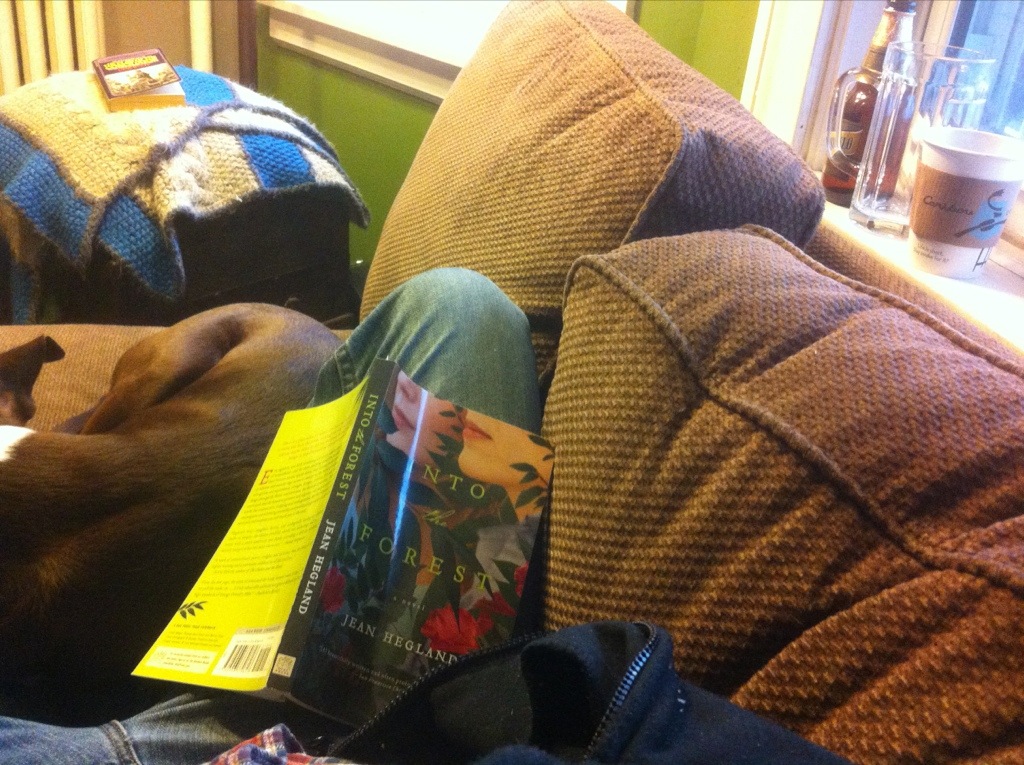Wow. I haven’t written here in quite some time. Keeping up a blog can be tough–not sure how some of you do it. I decided a few years ago that I was only going to post when I had something to say. Doesn’t do much to build an audience, I suppose, but it keeps me from writing superfluous things just to fill space. There’s enough of that on the internet already.
So, moving on. I meant to post this several weeks ago while the Minnesota State Fair was going on, but, it slipped through the cracks. Sorry. This post is going to be me “nerding out” on an article written by an author named David Foster Wallace.
Wallace wrote a book titled Infinite Jest. It’s a book that many writers love to praise as an example of true mastery of the craft. The book (and Wallace himself) is something that many people dote over with a certain level of…snobbery, almost implying that they understand his writing, as well as his tortured genius, much better than you possibly ever could.
I haven’t read Infinite Jest, or any of his other books for that matter, but I am often and continually planning on it.
The thing is, Wallace was brilliant. Stephen King said in his book On Writing that you can’t make a bad writer into an okay/good writer, and you can’t make an okay/good writer into a great writer. Great writers are born, not built, and their ranks are very, very limited. They include such wonders as Hemingway, Steinbeck, Fitzgerald, and, yes, Wallace.
I’ve only ever read short works by Wallace, but they’ve been, by and large, wonderful, and I think there’s a lot us hopeful writers can learn from him. That being said, I’d like to write about something I have trouble with from time to time, and that’s description.
Ticket to the Fair was published by Harper’s in July, 1994. It was written by Wallace, on assignment, vising the Illinois State Fair. One of the most marvelous things about the piece is how compelling Wallace makes a simple trip to the fair seem. Perhaps to someone who’s never been to a mid-western state fair, that isn’t a great accomplishment. It’s easy to make something foreign compelling. BUT for anyone who’s grown up going to the fair year after year, reading about one might seem like an absolute waste of time.
Let me tell you, the article is far from a waste of time, even if you’re not a nerd about writing.
The article is filled with observation and insight from a former mid-westerner (Wallace) turned East Coaster. It’s not without it’s snobbery–looking down his nose from time to time at those of us who enjoy the fair–but what I think makes Wallace’s condescension work is his ability to be both pompous and self-deprecating all in the same paragraph. And it’s genuine, too. He’s not forcing the self-deprecation to make the snobbery easier to swallow, he’s genuinely looking at himself and finding his own flaws–his own short-comings–while passing judgement on others.
While the article might be long, please, believe me when I tell you, it is absolutely worth reading.
By far the best thing in this article–in my opinion–is Wallace’s talent for description. I revel in it, especially his ability to bring about real imagery with very few words.
It’s a hard thing, description. Too little and you leave your readers not knowing which way is up, too much and, well, you’re boring. Really boring, at times. There’s a certain book (that I’m not going to name) in which the author took an entire page–one solid block of text–to list each tool that was in a workman’s bag. Why in the hell would I care? And why didn’t an editor make them cut it? I could understand leaving it there if it became important later on to know each tool, but it didn’t. The tools were never brought up again. Not even one of them, so why was it there?!
Okay. Sorry. But that’s an example of over-description.
Below are a few examples of Wallace’s brilliance when it comes to description, quoted directly from the article itself.
The heat is all too familiar. In August it takes
hours for the dawn fog to bum off. The air is like
wet wool.
– – –
The sun is a blotch in a sky
that isn’t so much cloudy as opaque. The com
starts just past the breakdown lanes and goes right
to the sky’s hem
Both bits come while Wallace is referencing his long drive through open fields on his way to the fairgrounds. The August heat is a big part of this article, and Wallace brings it up often, but each time he does, it’s in a new, fresh way.
“The air is like wet wool.” That’s a wonderful sentence, isn’t it? It sums up the way a hot, humid day clings to you, weighs you down, and tires you out. And it can be itchy, too–slapping the back of your neck, convinced another god damned mosquito is drinking its fill of you.
“The sun is a blotch in a sky that isn’t so much cloudy as opaque.” Simple, and to the point. He’s not going out of his way to tell you that the sun is a white, small circle with no “rays” of sunshine coming off it, in a sky covered in dull white fog. He builds the image quickly, and with just enough room for you (the reader) to fill in the blanks yourself, which is a crucial part of description. There should always be enough room for the reader to envision their on reality from your words.
He’s also great with character description.
We stand near the back. I gather that “Little Jim” Edgar, the governor, isn’t much respected by the press. Governor Edgar is maybe fifty and greyhound-thin, with steel glasses and hair that looks carved out of feldspar.
This was the first bit that made me just sit back and think, “whoa.” I honestly stopped and read the lines several more times. It’s good.
I envisioned that guy (the governor) with stunning clarity. In my version of him, he’s got a mustache, like Spiderman’s boss. Does your version have a mustache? If he does, isn’t that interesting, how your mind filled in the rest? And if he doesn’t, what do you see that Wallace never even mentions.
I’ll tell you what mine looks like, based on that one sentence, and we can see where ours are either the same or different. My governor has a short-sleeved button up shirt on. It’s white, doesn’t fit him correctly, and has a rumpled collar. He’s got a tie–black or some dark, muted color, and dress slacks that drape over his brown shoes. His glasses continually slide down his nose due to sweat/looking at notes, and he stammers, but remains wholesome, the way a governor should. He actually looks a lot like Michael Douglas’ character from the movie Falling Down.
All of that from one sentence. Man that’s cool.
You can do the same things with the environmental description as well. When he describes the August heat, I start to hear the whirring of cicadas, the creaking of corn under the sun, and I can almost feel a breeze that’s more warm than cool.
What’s great about description, and what’s important for aspiring writers to learn, is that no two people see the same thing, and that’s okay. The reader doesn’t need to see exactly what you see, they just need the right idea. The look of a character is only a part of them. It’s a part of their personality, their behavior, and their actions, but it isn’t the whole thing. A character’s look can say loads about them when first introduced, but over describing them isn’t the way to do it.
Over description is a manual. Good description is…vaguely precise. It’s something to really pay attention to while reading, and to practice while writing. It’s something I’m routinely trying to get better at it, and Wallace is a great place to learn.
As an exercise, try picturing the governor that’s in your head and then try to understand what about Wallace’s description gave you that image. How do the cloths fit on your governor? Are the tight, snug, exact? Or do they hang off him? Did the words “greyhound-thin” determine what you saw? What little bit of description helped you color in the rest?
There’s so much more in Wallace’s article that we could go over, but I won’t, that might be over doing it 😉
Thanks for reading.











